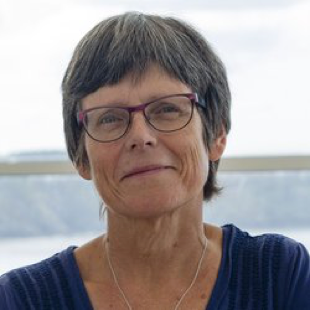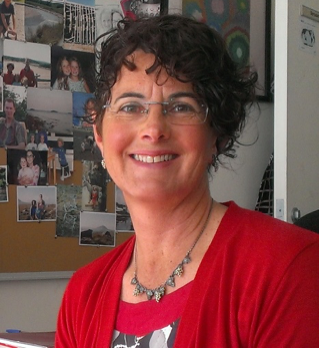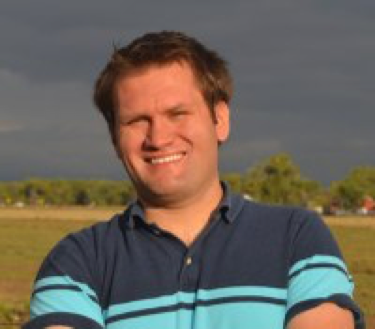Science Advisory Committee

Anne-Marie Treguier
Committee Chair
Research Director, CNRS, IUEM,
Brest Laboratory of Physics of the Oceans, (LPO)
Dr. Treguier research focus is on numerical ocean modelling from the global to the regional scale. Influence of mesoscale eddies on the ocean circulation and on the large scale transports of heat and freshwater, and the influences of bottom topography on the ocean circulation. She has worked on the DRAKKAR collaborative project for ocean modeling, the OVIDE, Observatory of inter-annual decadal variability in the Atlantic, the NORD, the EMBRACE European project on Earth System models and COMODO, French numerical modeling community. She has been a member of the CLIVAR Atlantic Implementation panel since 2009, a member of CTI committee of GENCI (French national high performance computing since 2008, a member of CLIVAR working group on ocean model development (2000-2007), and a editor for the journal Ocean Modeling since 2007.

Magdalena Alonso Balmaseda
Head of Earth Predictability Section
Research Department, Earth System Predictability Section
European Centre for Medium-Range Weather Forecasts (ECMWF)
Dr. Balmaseda is an expert on predictability, initialized seamless predictions and ocean/coupled reanalysis. Her research focus is on seamless probabilistic forecasting systems and forecasting strategies: initialization, ensemble generation, model evaluation and skill assessment. On air-Sea interaction, ocean and coupled reanalyses: methodology and evaluation, climate dynamics: process studies and prediction, and evaluation of the Ocean Observing System. Dr. Balmaseda is a member of the NOAA Climate Program Office (CPO) Earth System Science and Modeling (ESSM) advisory Council, of the EuroArgo Scientific Steering Group, the Scientific Advisory committee of the Bjerkness Center, the GODAE Ocean View Scientific Steering Team and is a past member of the CLIVAR Pacific Panel (2000-2006), CLIVAR GSOP panel (2008-2016) and EUROBRISA (2006-2011).

Arne Biastoch
Oceanographer
Research Center for Marine Geosciences (GEOMAR)
Helmholtz Centre for Ocean Research
Physical Oceanographer with a strong interest to use numerical models to research the mesoscale and large-scale ocean circulation and to interdisciplinary work on geosphere and biological interactions.

Bernadette Sloyan
Chief Research Scientist
Commonwealth Scientific and Industrial Research Organization (CSIRO)
Dr. Bernadette Sloyan is a Chief Research Scientist with CSIRO’s Oceans and Atmosphere. Her scientific interests are documenting and understanding the oceans circulation and variability. Her work has elucidated the importance of key ocean processes including ocean mixing and air-sea interactions in the Southern, Pacific and Indian Oceans. She hold a number of international positions; Co-Chair of the international Global Ocean Ship-based Hydrographic Investigations Program (GO-SHIP) and Co-Chair of the Ocean Observations Physics and Climate (OOPC) panel a component of the Global Ocean Observing Systems.

Mark A Taylor
Chief Computational Scientist, Energy Exa-scale Earth System Model (E3SM) Project
Center for Computing Research (CCR), Sandia National Laboratories
Dr. Mark A. Taylor is a mathematician who specializes in numerical methods for parallel computing and geophysical flows. He currently serves as Chief Computational Scientist for the DOE's Energy Exa-scale Earth System Model (E3SM) project. He developed the mimetic/conservative formulation of the spectral element method used in E3SM's atmospheric component model. Mark received his Ph.D. from New York University's Courant Institute of Mathematical Sciences in 1992. He joined Sandia National Laboratories in 2004 and was promoted to Distinguished Member of the Technical Staff in 2018. In 2014 he was awarded (with Drs. David Bader and William Collins) The Secretary of Energy Achievement Award for his work unifying the Department of Energy's climate modeling research community, enabling the development of high-resolution fully-coupled climate system simulations. Previously Mark served as co-chair of the Community Earth System Model's Atmosphere Model Working group (2011-2014) and as a member of the Korean Institute of Atmospheric Prediction Systems' Science Advisory Committee (2013-2016).

Guoxiong Wu
Academician and Life Tenure Professor of the Chinese Academy of Sciences (CAS)
Director, Academic Committee of Laboratory of Atmospheric Sciences and Geophysics (LASG), CAS
Prof. Wu’s research involves weather and climate dynamics, including numerical modeling and data diagnosis. Based on the conservation of Ertel potential vorticity, he developed the theory of Slantwise Vorticity Development (SVD) to explain the explosive development of weather systems such as the Southwest Vortex and torrential rain, and a series of theory for the development of subtropical anticyclone and the co-existence of subtropical monsoon and desert. He promoted the study of the Chinese meteorologists on the impacts of Tibetan Plateau on weather and climate, particularly on the onsets of the Asian summer monsoon, and for the first time pointed out that the onsets are divided into three consequent stages. Prof. Wu’s research has resulted in more than 200 peer-reviewed papers published and has given a large number of invited talks across the world.
Over the past 20 years, Prof. Wu has been actively involved in the international climate community. Some of his high level appointments in professional societies and international journals include: Executive Board Member of International Council for Science (ICSU) from 2011-2014, President of International Association of Meteorology and Atmospheric Sciences (IAMAS) from 2007-2011, Officer of WMO/ICO/ICSU Joint Science Committee (JSC), World Climate Research Program (WCRP) from 2005-2010, and Editor of Climate Dynamics since 2000, etc.

R. Colin Zarzycki
Assist Professor of Meteorology and Climate Dynamics
Penn State College of Earth and Mineral Sciences, Department of Meteorology and Atmospheric Science
Dr. Zarzycki’s research is centered on simulating extreme atmospheric phenomena and bridging the gap between weather and climate. In particular, focusing on cutting-edge, high-resolution modeling techniques. This allows for multiple research directions, including regional weather and climate prediction on timescales ranging from days to decades, the development of dynamical cores and sub-grid physical parameterizations, and software engineering on peta-scale computing systems. He uses these techniques to investigate tropical cyclone dynamics in global climate models and to improve the community's capability to objectively detect weather extremes in "big (climate) data."
Prior to State College, he was a Project Scientist jointly in the Climate and Global Dynamics and Mesoscale and Microscale Meteorology laboratories at the National Center for Atmospheric Research (NCAR) after two years as an Advanced Study Program (ASP) postdoctoral fellow.
